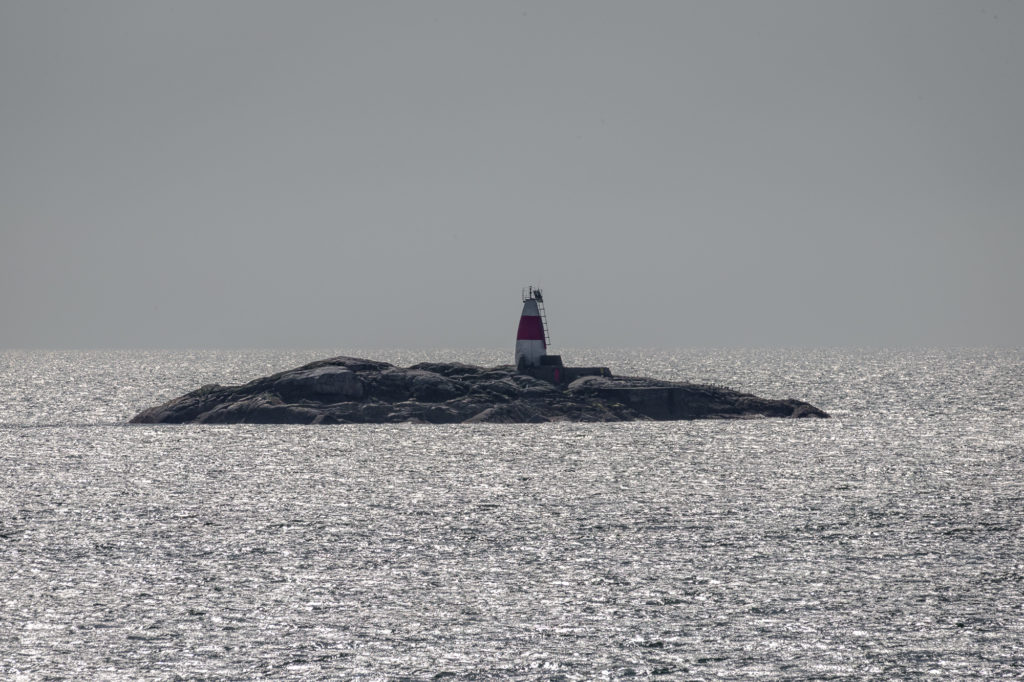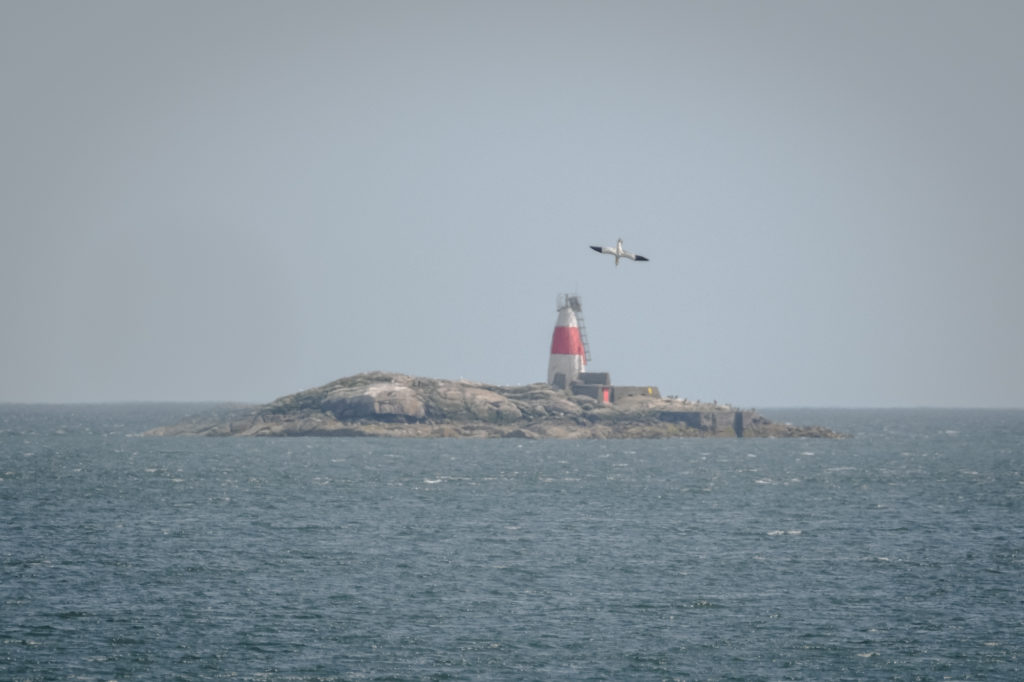I knew the rocks east of Dalkey Island as The Muglins for years long before I knew that executed pirates were put on display there. Somehow it came as no surprise that a word as ugly as Muglins was describing a place of death.

Childhood priorities normally place the learning about piracy ahead of knowing the utility of lighthouses. What is it about pirates that seems romantic? However, for child fishermen, these rocks were a potential haven. A smelly, slimy haven but a potential sanctuary nonetheless. It takes years to understand the danger of the tidal rip through Dalkey Sound and it helps to know there is a possible escape. The geography and bathymetry combine to delay it by quite a few minutes on the outboard side of Dalkey Island. We never did need the haven though we visited a few times when the swell permitted.
The heavily jointed granite rocks are dangerous to shipping though they weren’t always identified as such on maps I’ve seen from the 17th century; maritime charts were presumably more informed. Back then, Dalkey Island was identified as St Begnets Island, once a Mesolithic homestead and later both a shipping hazard and site of a defensive battery during the Napoleonic Wars. Out a few hundred metres east, The Muglins was just another rock that could scupper your approach to the many small harbours that were for centuries the ports of Dublin.
As the volume of shipping grew and commercial interests demanded more efficiency, more lights were needed to mark the hazards and shallows and allow faster passage around them. This is a cruel coast subject to vicious storms and thick fogs that have claimed many vessels and many lives. These ‘siren rocks’ were given a distinctive beacon, belatedly built in 1880 over the bodies of the two pirates who had been hung a century before. It’s said that these two pirates murdered the complement of the Earl of Sandwich in 1765 when they commandeered the cargo of wines and silks en route to Dublin from Tenerife. Some say their bodies were left dangling as a deterrent for the rest of 1765. I can well believe it considering the photos I’ve seen of heads mounted on spikes in other dominions of the empire.
‘Your photo is real. I just met the photographer and he showed it to me and we discussed how it was taken.’
The most recent full moon on the 7th of May offered the opportunity for a great shot of the rising full Flower Moon. I had an idea that it would be possible to capture the moon rise behind The Muglins; the question was where to stand. I planned the time and best viewing position using The Photographer’s Ephemeris. However, I saw clouds on the horizon and decided it wasn’t my night.
Then I was shown a photo of the full moon taken that night. I thought it was a composite. A couple of weeks went by and I heard that the same photo was now framed and hanging in pride of place in the kitchen. Alarm bells rang. I had thought it was fake and that came out in conversation.
Earlier today, I went to Bulloch to continue my scouting for the location from which the shot could have been taken. A shot I was interested in taking myself and might yet try on another occasion.
As I was standing on the rocks taking the photo posted below, ‘From Bulloch Harbour’, a guy in a bicycle helmet appeared and asked if I was a photographer or a birdwatcher. He was scouting for suitable night-time sites for cosmic shots. We got talking across the appropriate social distances and I told him why I was there. He had taken shots that same night of the same moon rising from nearby Sandycove. Bizarre coincide, I thought I had met the photographer. He showed me his shot on his phone. A great shot but I thought it wasn’t what I was remembering. We parted and he cycled towards home.
Except I was wrong. I was forwarded the same photo again and lo and behold, I had just met the photographer. There are two moon-lighthouse photographs in this story; the one that is very real and the one I can’t find again. I had confused the two. Paul O’Brien has some great shots here including the moon rising.
My search for the shot with the moon behind the lighthouse isn’t suspended. I took binoculars to the east pier in Dun Laoghaire where I could see the red door at the base of the light. And returned with my Fuji and the 1.6 crop sensor that extends the 600 to 960mm. Handheld, on very a windy day, I caught a gannet rather than the moon.

From Bulloch Harbour
600mm 1/3200s f/11 ISO 500
From Dun Laoghaire Pier
960mm 1/2000s f/6.3 ISO 500
I’ve posted three photos on this journal entry. All three taken with the Sigma 150-600 lens; two earlier today, one in 2016.
The picture at the top was taken the day I bought the lens in 2016. It was taken from Coliemore Harbour, a place I knew well as a child who fished and later sailed the waters in that photo. The rainbow was faint against the ominous cloudscape so I took three exposures and combined them to maximise the range of luminance levels, the so called High Dynamic Range (HDR) technique. I liked this so much that I made it a scarf candidate for Simonscarves.

Leave a Reply